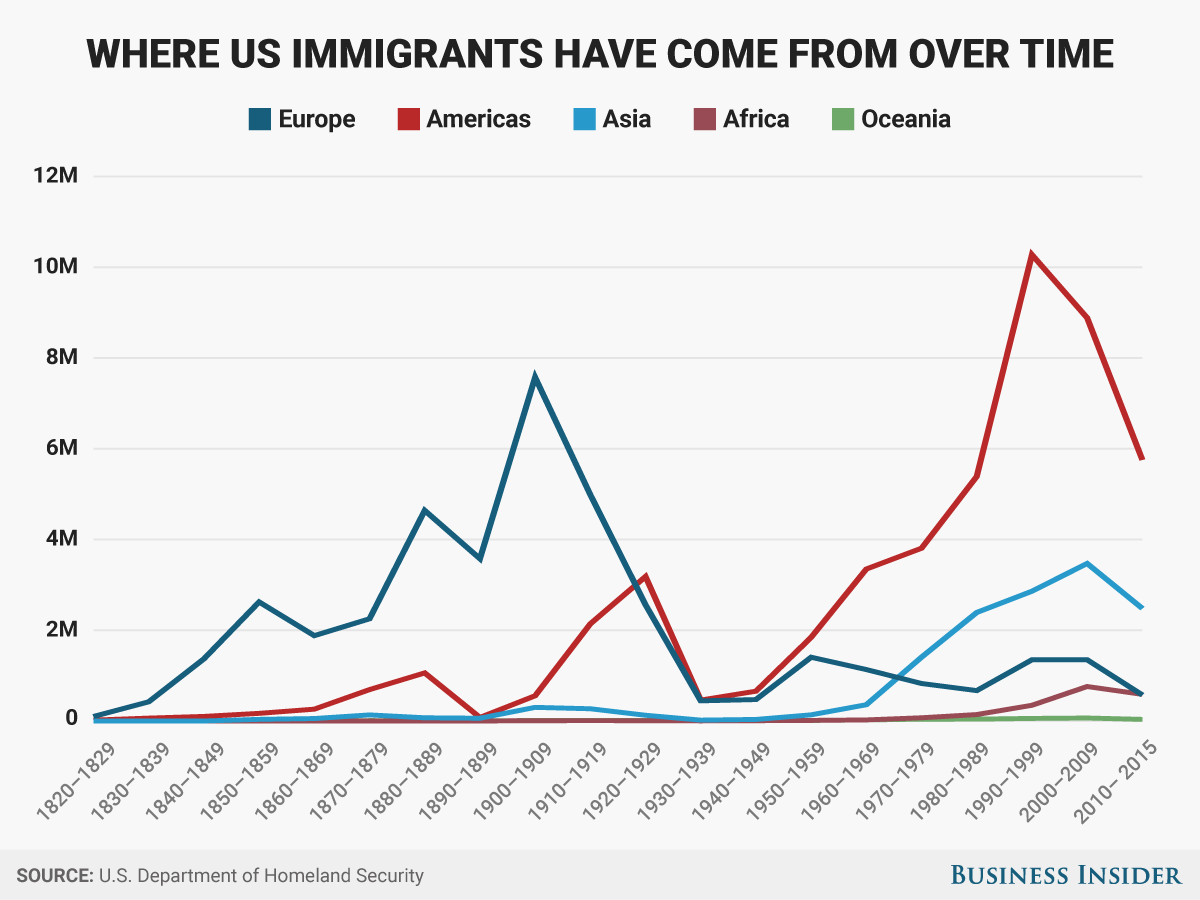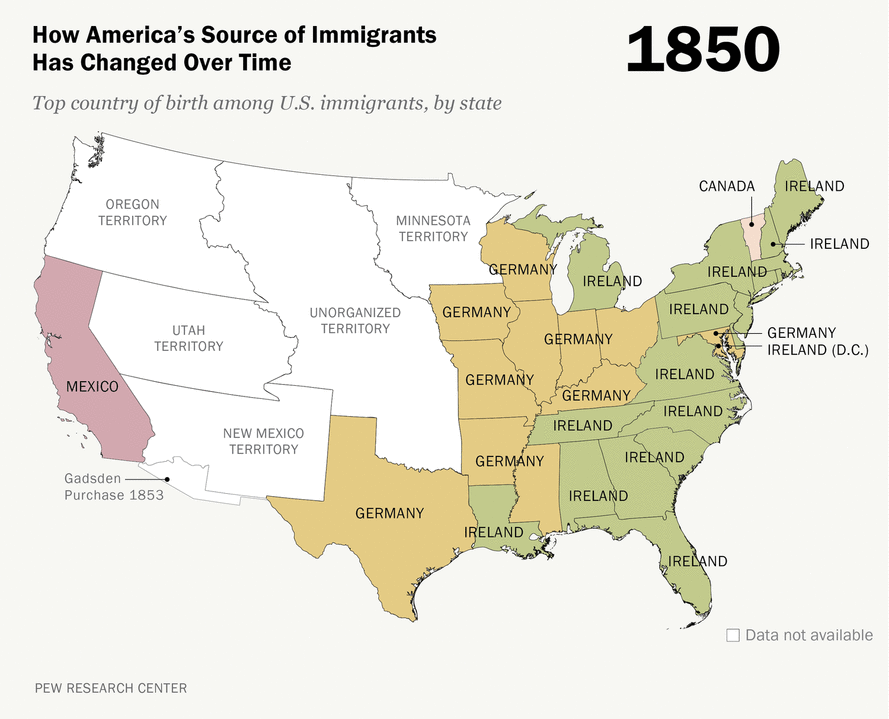Here's where US immigrants have come from for the last 200 years

These infographics and charts show how much the United Sates owes its identity and heritage to immigration. Image: REUTERS/Damir Sagolj
President Donald Trump's recent executive orders on immigration may have reignited public debate, but Americans have long harbored anti-immigrant sentiments.
One-third of Americans said in a 2016 Pew Research Center survey that immigrants are a "burden on our country because they take our jobs, housing and health care," and 38% say immigration should be decreased.
On the flip side, 59% of Americans say immigrants "strengthen our country because of their hard work and talents" and either think immigration should stay at its present level or increase.
As of February 21st 2017, immigrants make up 13.5% of the US population — on par with the share in 1860, according to the Migration Policy Institute.
The overall number of immigrants coming to the US peaked from 2000-05 at 5 million, and has been declining since then.
Here are the major regions where immigrants entering the US have come from since 1820:

US immigrants were largely of European descent in the 1800s, and started coming from the Americas (largely Mexico) in the 1960s.
The sharp decrease in the 1920s is due to Congress passing the Exclusion Act, which set limits on the number of immigrants who could enter the US, based on a quota system of the percentage of nationalities already in the country. Barely anyone from Asia could enter at all.
Congress revised the law in 1952, and immigration started to tick up again. Pew Research Center made this neat GIF showing the major country where immigrants have come from by state from 1850-2013:

Don't miss any update on this topic
Create a free account and access your personalized content collection with our latest publications and analyses.
License and Republishing
World Economic Forum articles may be republished in accordance with the Creative Commons Attribution-NonCommercial-NoDerivatives 4.0 International Public License, and in accordance with our Terms of Use.
The views expressed in this article are those of the author alone and not the World Economic Forum.
Stay up to date:
Migration
Forum Stories newsletter
Bringing you weekly curated insights and analysis on the global issues that matter.
More on Youth PerspectivesSee all
Christie Burley and Inés Yábar
November 5, 2025







